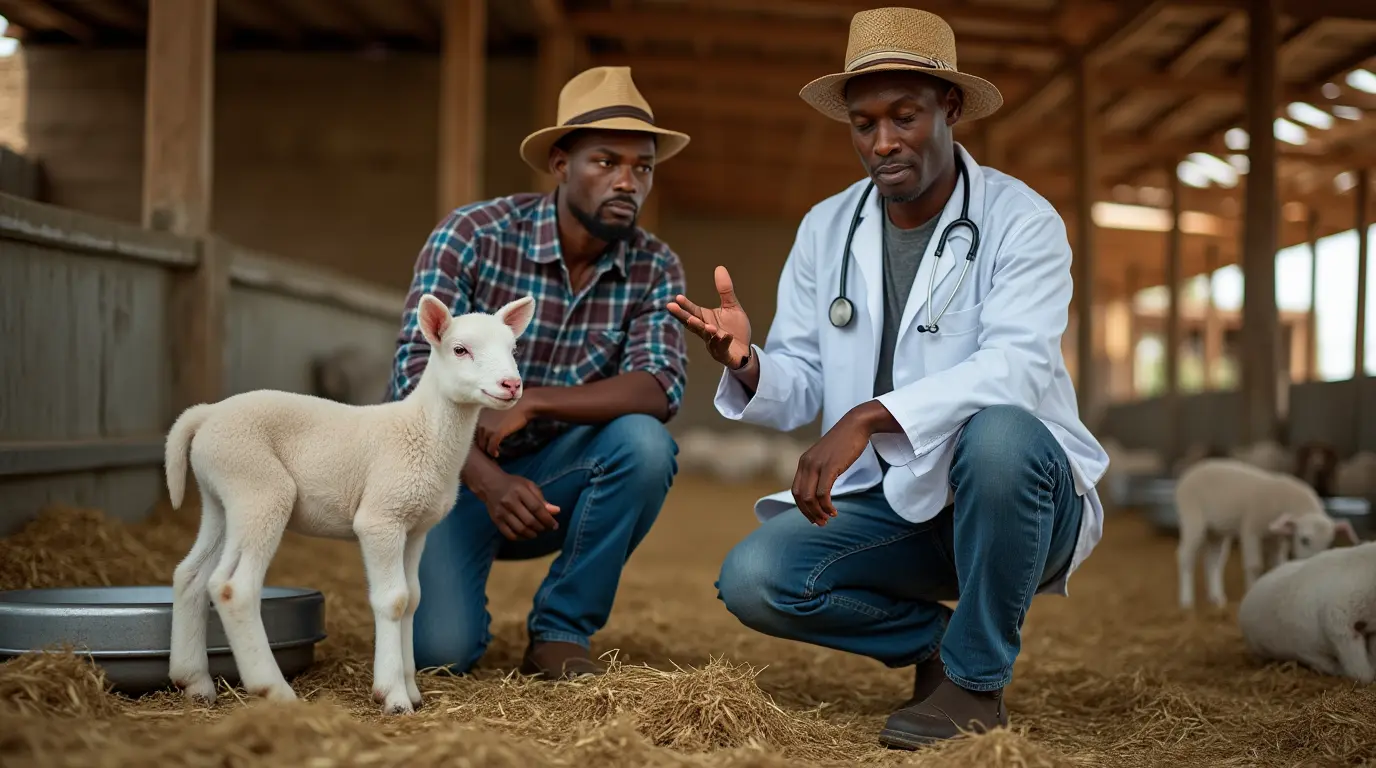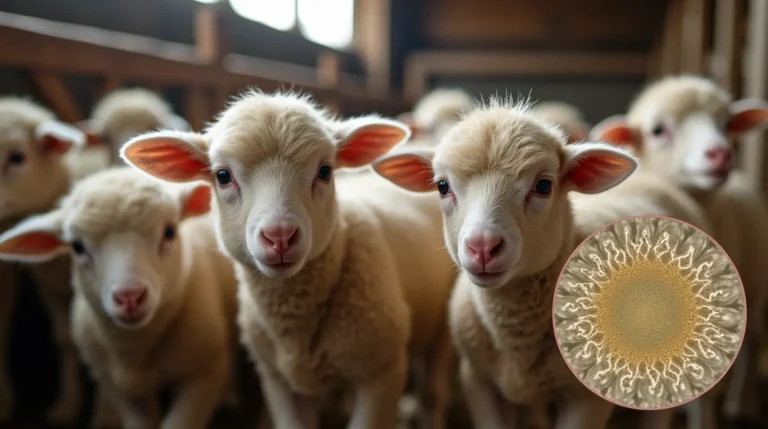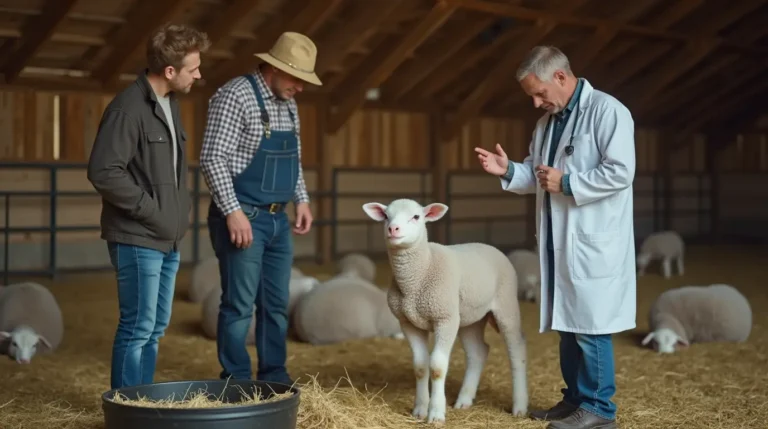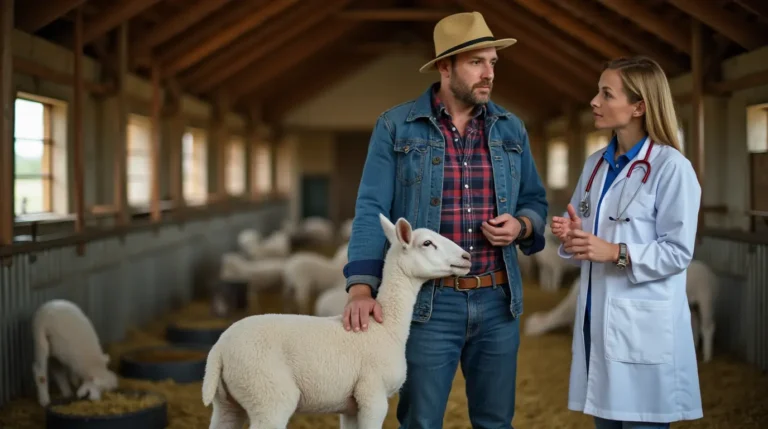Discover the 5 critical signs of intestinal parasites in lambs, learn effective treatment strategies, and protect your flock’s health with our comprehensive guide.
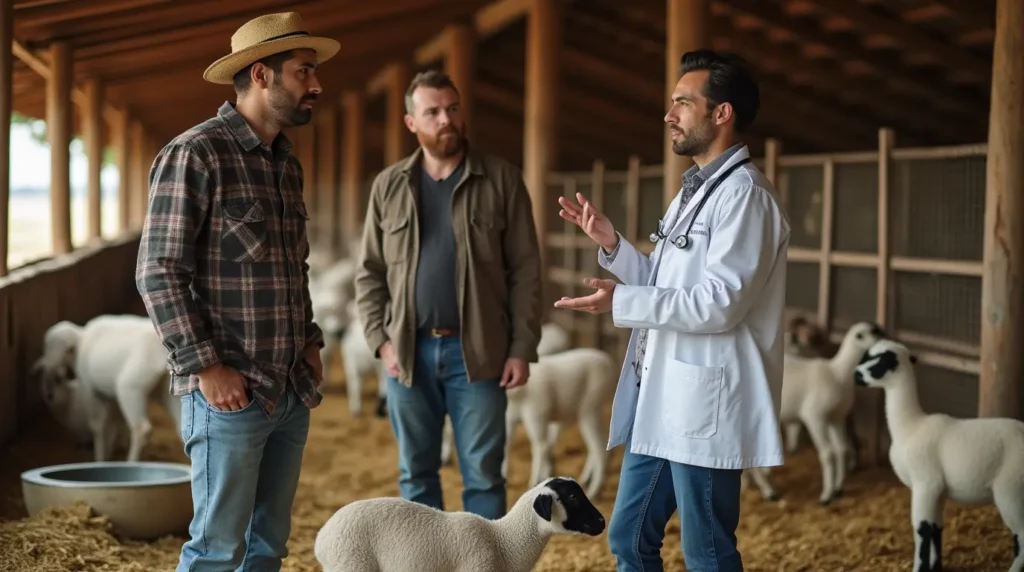
Table of Contents
Lamb farming is a delicate balance of nutrition, care, and proactive health management. Among the most challenging health issues facing shepherds are intestinal parasites in lambs—microscopic invaders that can compromise the growth, productivity, and overall well-being of young sheep herds. Understanding these parasitic threats is crucial for maintaining a healthy and thriving flock.
Intestinal parasites represent more than just a minor inconvenience; they can significantly impact lamb development, causing weight loss, reduced growth rates, and potentially severe health complications if left untreated. This comprehensive guide will walk you through the critical signs of worm infestations, helping farmers and livestock managers identify, prevent, and effectively treat these persistent agricultural challenges.
Understanding Intestinal Parasites in Lambs
What Are Intestinal Parasites?
Intestinal parasites are organisms that live and feed within a lamb’s digestive system, deriving nutrients at the host’s expense. The most common types include:
- Haemonchus contortus (Barber’s pole worm)
- Ostertagia circumcincta (Brown stomach worm)
- Trichostrongylus axei (Stomach hair worm)
- Nematodirus species (Thread-necked worms)
These parasitic worms can cause significant damage to the lamb’s intestinal lining, impeding nutrient absorption and compromising the animal’s immune system.
5 Critical Signs of Worm Infestations in Lambs
1. Poor Weight Gain and Stunted Growth
One of the most telling indicators of intestinal parasites is a lamb’s inability to gain weight or maintain healthy growth patterns. Parasitic infections disrupt nutrient absorption, causing:
- Reduced feed conversion rates
- Decreased muscle development
- Slower overall growth compared to healthy peers
2. Pale Mucous Membranes and Anemia
Certain parasites, particularly Haemonchus contortus, feed directly on the lamb’s blood. This leads to:
- Pale or white gums and inner eyelids
- Significant red blood cell reduction
- Potential severe anemia if left untreated
3. Diarrhea and Digestive Disturbances
Intestinal parasites frequently cause gastrointestinal inflammation, resulting in:
- Watery or mucus-laden feces
- Potential dehydration
- Nutritional malabsorption
- Decreased overall appetite
4. Rough, Dull Coat and Poor Body Condition
A lamb’s external appearance often reflects internal health challenges. Parasitic infections typically manifest as:
- Lackluster, dry coat
- Visible ribs and hip bones
- Reduced muscle tone
- General appearance of weakness
5. Bottle Jaw (Mandibular Edema)
A distinctive and advanced sign of severe parasitic infection is the development of bottle jaw—a swelling beneath the jaw caused by protein deficiency and fluid accumulation. This condition indicates:
- Advanced parasitic damage
- Significant protein loss
- Urgent need for veterinary intervention
Diagnostic Approaches
Fecal Egg Count (FEC) Testing
Veterinarians utilize specialized microscopic examination to:
- Quantify parasite load
- Identify specific worm species
- Determine appropriate treatment strategies
Clinical Examination
A thorough veterinary assessment includes:
- Physical body condition evaluation
- Mucous membrane color checking
- Weight and growth rate analysis
- Blood parameter investigation
Treatment Strategies
Targeted Deworming Protocols
- Selective Treatment
- Treat only animals showing significant parasite burdens
- Reduce potential anthelmintic resistance development
- Strategic Medication
- Use broad-spectrum anthelmintic drugs
- Rotate medication classes to prevent resistance
- Follow precise dosage recommendations
Recommended Veterinary Medications
- Ivermectin
- Fenbendazole
- Albendazole
- Moxidectin
Prevention Strategies
Pasture Management
- Implement rotational grazing
- Maintain clean, well-drained pastures
- Avoid overstocking
- Practice multi-species grazing
Nutritional Support
- Provide balanced, high-protein feed
- Ensure adequate mineral supplementation
- Support immune system development
Recommended Products on Amazon
- Farmer’s Friend Livestock Scale
- Digital Veterinary Thermometer
- Sheep Dewormer Kit
- Livestock First Aid Kit
Frequently Asked Questions
Q: How often should lambs be dewormed? A: Typically every 4-6 weeks during peak grazing season, but consult your veterinarian for personalized advice.
Q: Can intestinal parasites be transmitted to humans? A: Some parasites have zoonotic potential. Practice good hygiene and consult healthcare professionals if concerned.
Q: Are natural deworming methods effective? A: While some herbal treatments show promise, they should complement—not replace—professional veterinary interventions.
Conclusion
Understanding and managing intestinal parasites in lambs requires vigilance, knowledge, and proactive healthcare strategies. By recognizing early warning signs, implementing comprehensive prevention methods, and working closely with veterinary professionals, farmers can protect their lamb herds from these microscopic threats.
Call to Action: Share your experiences with lamb parasite management in the comments below, or consult a local veterinarian to develop a tailored parasite control plan for your flock.

